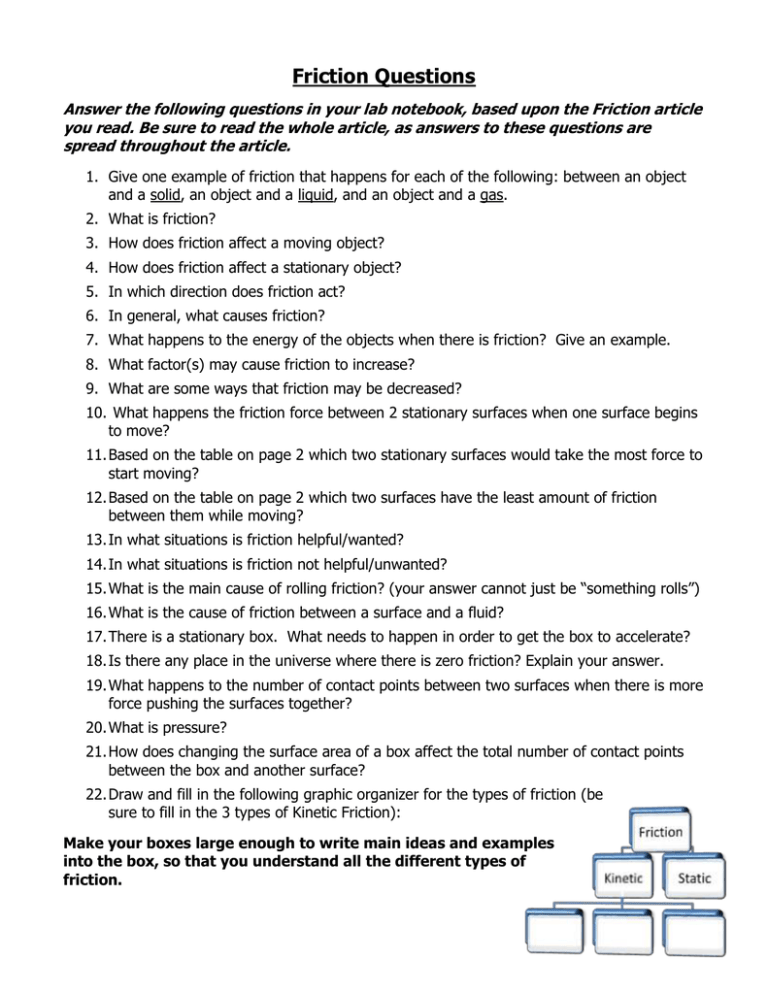Friction Questions to be answered in lab notebook
advertisement

Friction Questions Answer the following questions in your lab notebook, based upon the Friction article you read. Be sure to read the whole article, as answers to these questions are spread throughout the article. 1. Give one example of friction that happens for each of the following: between an object and a solid, an object and a liquid, and an object and a gas. 2. What is friction? 3. How does friction affect a moving object? 4. How does friction affect a stationary object? 5. In which direction does friction act? 6. In general, what causes friction? 7. What happens to the energy of the objects when there is friction? Give an example. 8. What factor(s) may cause friction to increase? 9. What are some ways that friction may be decreased? 10. What happens the friction force between 2 stationary surfaces when one surface begins to move? 11. Based on the table on page 2 which two stationary surfaces would take the most force to start moving? 12. Based on the table on page 2 which two surfaces have the least amount of friction between them while moving? 13. In what situations is friction helpful/wanted? 14. In what situations is friction not helpful/unwanted? 15. What is the main cause of rolling friction? (your answer cannot just be “something rolls”) 16. What is the cause of friction between a surface and a fluid? 17. There is a stationary box. What needs to happen in order to get the box to accelerate? 18. Is there any place in the universe where there is zero friction? Explain your answer. 19. What happens to the number of contact points between two surfaces when there is more force pushing the surfaces together? 20. What is pressure? 21. How does changing the surface area of a box affect the total number of contact points between the box and another surface? 22. Draw and fill in the following graphic organizer for the types of friction (be sure to fill in the 3 types of Kinetic Friction): Make your boxes large enough to write main ideas and examples into the box, so that you understand all the different types of friction.




